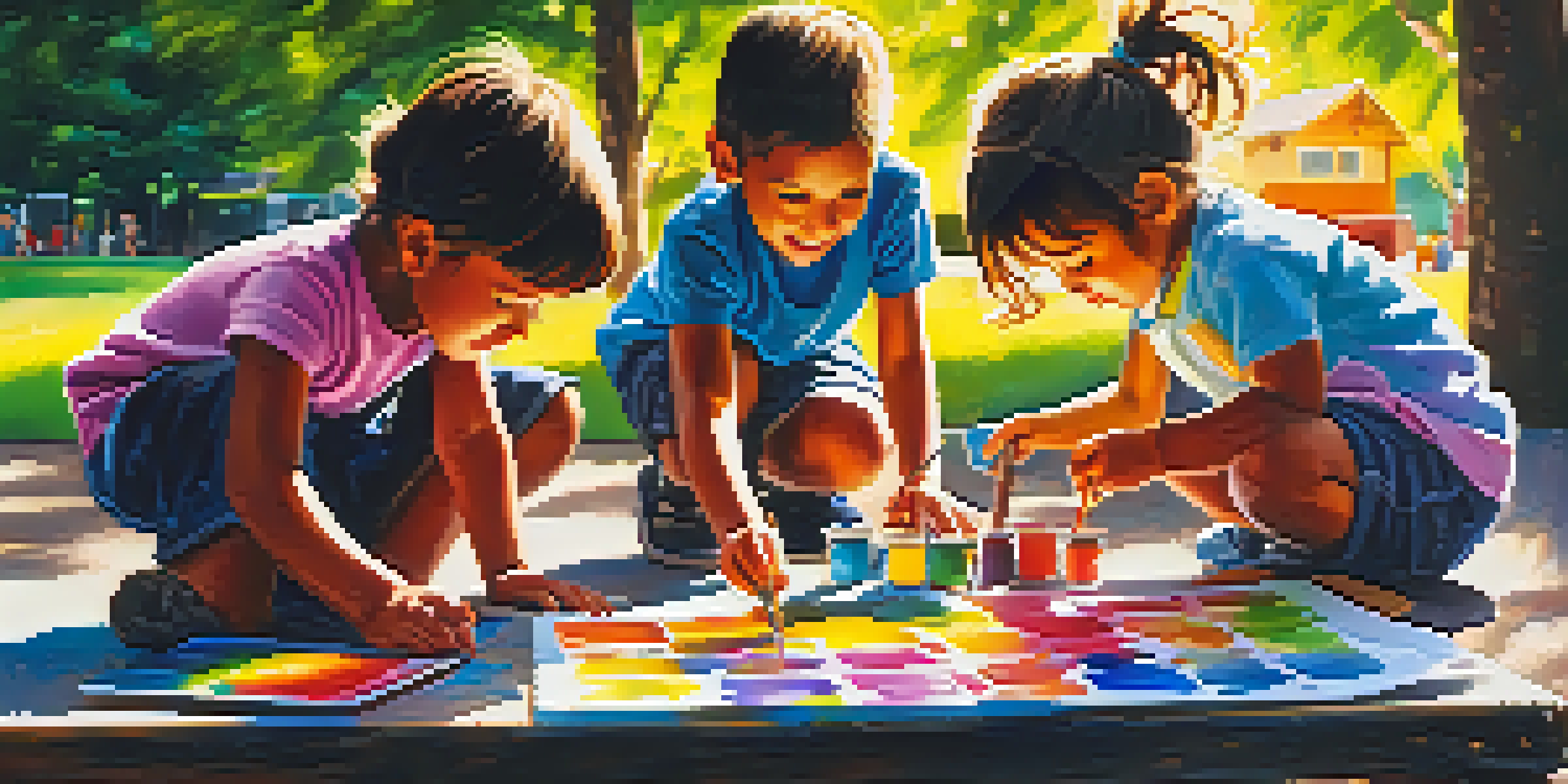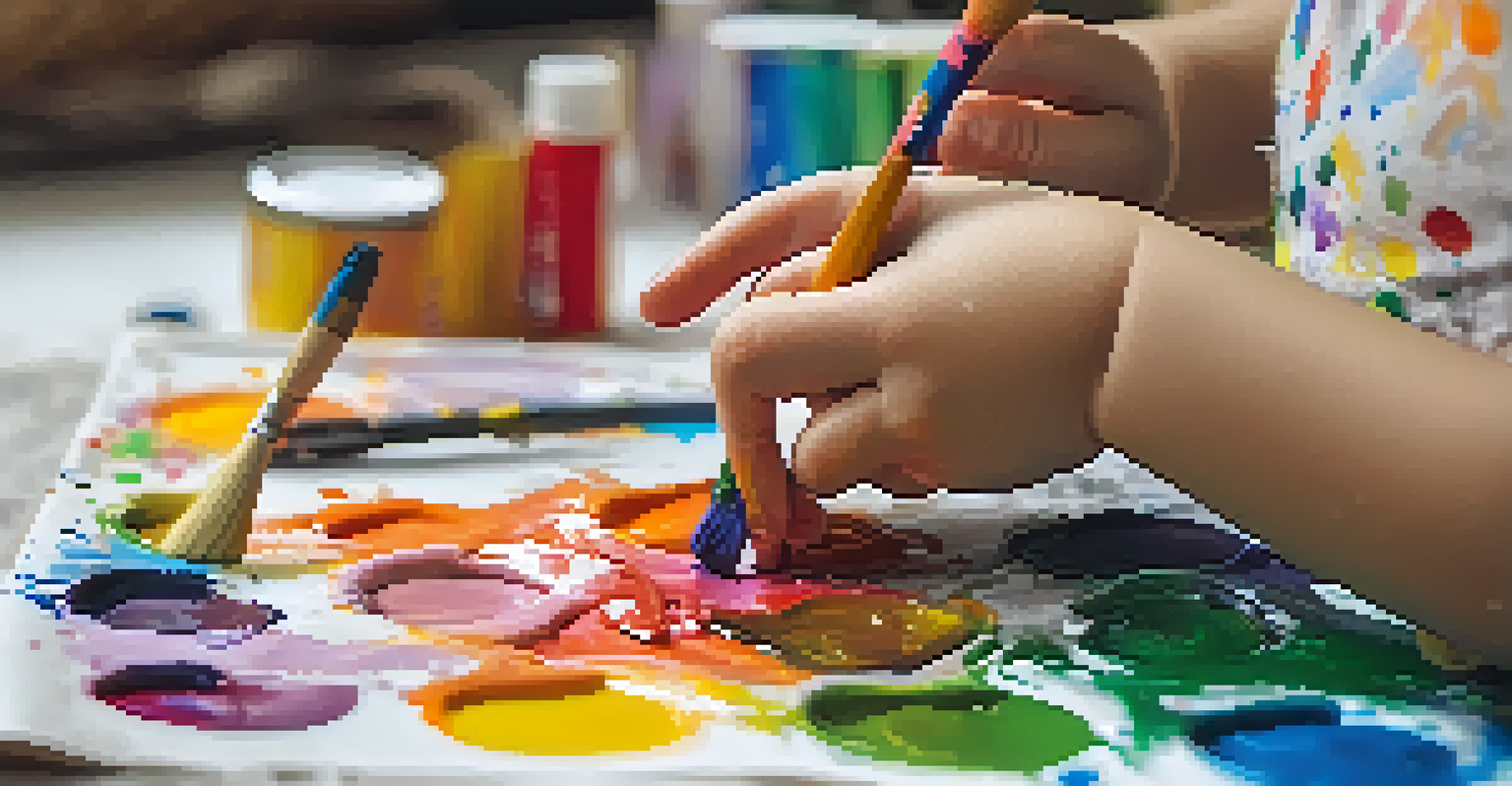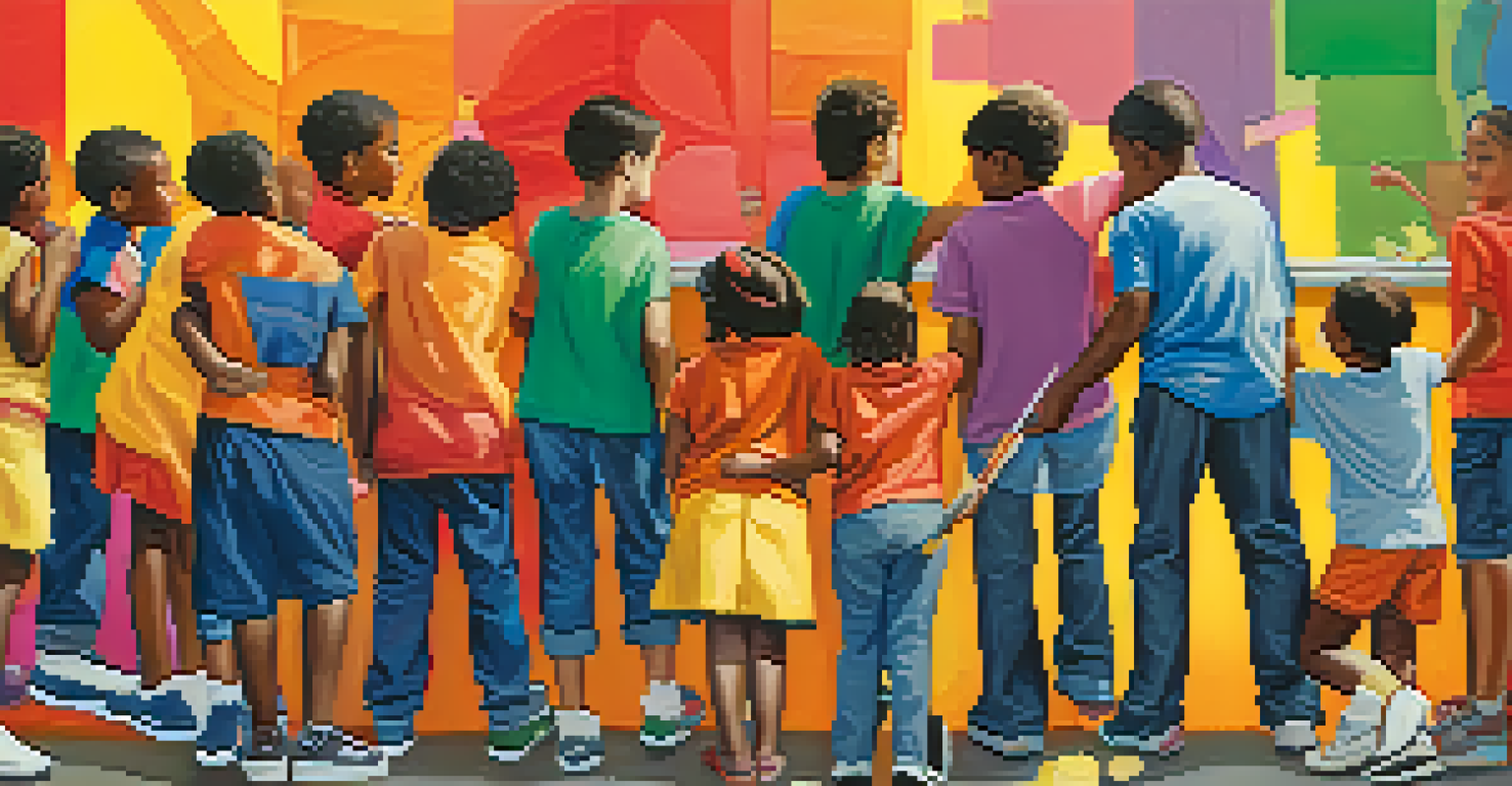Benefits of Introducing Painting to Young Children Early On

Fostering Creativity Through Early Painting Experiences
Introducing painting to young children can ignite their creativity in remarkable ways. When kids are given a brush and canvas, they’re not just creating art; they're exploring their imaginations. This exploration allows them to express their thoughts and feelings, which is vital for their emotional development.
Every artist was first an amateur.
Painting encourages experimentation, enabling children to try different colors and techniques. This hands-on approach helps them learn about decision-making and problem-solving in a fun and engaging way. Each stroke on the canvas is a step towards building their unique artistic voice.
Moreover, creativity cultivated through painting isn't limited to art; it spills over into other areas of learning. Children who engage in creative activities often demonstrate enhanced cognitive abilities and improved critical thinking skills, setting a solid foundation for lifelong learning.
Enhancing Fine Motor Skills with Painting Activities
Painting isn't just about colors and creativity; it's also an excellent way to develop fine motor skills. As children grasp brushes and manipulate paint, they strengthen the small muscles in their hands and fingers. These skills are crucial for everyday tasks like writing, buttoning clothes, and using utensils.

Different painting techniques, such as finger painting or using sponges, further engage their motor skills. Each activity presents a unique challenge, helping to refine hand-eye coordination and dexterity. This hands-on practice is essential as children move towards more complex tasks in their development.
Painting Boosts Creativity and Skills
Engaging in painting enhances children's creativity while also developing their fine motor skills and problem-solving abilities.
In essence, early exposure to painting can lead to a smoother transition into school activities that require fine motor skills. By nurturing these abilities through art, parents and educators can help children gain confidence in their physical capabilities.
Boosting Emotional Expression Through Artistic Freedom
Painting offers a safe space for young children to express their emotions. When words may fail, colors and shapes become their voice, allowing them to convey feelings like joy, anger, or sadness. This ability to express emotions through art can be incredibly therapeutic and validating.
Creativity takes courage.
As children paint, they learn to recognize and process their emotions. This self-awareness is a crucial step in emotional intelligence, which is important for building relationships and navigating social situations. Art becomes a tool for them to communicate what they may not be able to articulate verbally.
Moreover, as they share their artwork, children can foster connections with peers and adults. Discussing their creations opens up conversations about feelings and experiences, further enhancing their emotional literacy and interpersonal skills.
Encouraging Problem-Solving Skills Through Art
Engaging in painting activities introduces children to problem-solving skills in a fun and interactive manner. When faced with a blank canvas, kids must decide how to start, what colors to use, and how to bring their ideas to life. These decisions require critical thinking and creativity.
As they paint, children often encounter challenges, such as how to blend colors or fix a mistake. Learning to navigate these obstacles develops resilience and adaptability, qualities that are essential in everyday life. Each challenge they overcome boosts their confidence and encourages independent thinking.
Art Fosters Emotional Expression
Painting provides a safe outlet for children to express their emotions, building emotional intelligence and communication skills.
Through painting, kids learn that mistakes can lead to unexpected and beautiful outcomes. This mindset fosters a positive attitude toward challenges in other areas, teaching them that every problem has a solution.
Building Social Skills Through Collaborative Art Projects
Painting can also be a wonderful way for children to develop social skills. When they participate in group painting activities, they learn to share materials, collaborate on ideas, and respect each other's creative processes. This cooperation is vital for building friendships and working in team settings.
Working alongside peers encourages communication and negotiation, as children discuss their artistic choices and find common ground. This interaction not only enhances their social skills but also promotes empathy and understanding of diverse perspectives.
Moreover, celebrating each other's artwork fosters a sense of community and belonging. Children learn to appreciate different styles and approaches, reinforcing the idea that diversity in creativity is something to be valued.
Cultivating Patience and Focus Through the Art of Painting
Painting teaches children the importance of patience and focus, qualities that are essential for success in various aspects of life. As they work on a piece, they learn to take their time and pay attention to details. This practice helps improve their concentration skills.
The process of creating art can be slow and requires dedication. As children understand that great things take time, they develop a sense of perseverance. They learn that rushing can lead to mistakes, while careful consideration can lead to more satisfying results.
Collaboration Builds Social Skills
Participating in group painting activities helps children develop essential social skills like sharing, empathy, and teamwork.
By fostering patience through painting, children can apply this skill to other areas, such as homework and sports. The ability to concentrate and commit to a task is a valuable asset that will serve them well throughout their lives.
Nurturing a Lifelong Appreciation for the Arts
Introducing painting to young children can spark a lifelong appreciation for the arts. When children are exposed to creative outlets early on, they begin to recognize the value of artistic expression in their lives. This appreciation can lead to a greater interest in various art forms as they grow.
As they continue to explore painting and other artistic endeavors, children are more likely to seek out opportunities for creative expression throughout their lives. This habit can contribute to a richer, more fulfilling life, filled with personal expression and cultural engagement.

Moreover, an appreciation for the arts can enhance their understanding of different cultures and histories, fostering a more well-rounded worldview. By nurturing this passion from a young age, we help cultivate future artists, thinkers, and innovators.